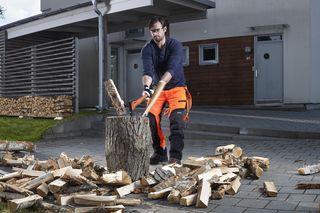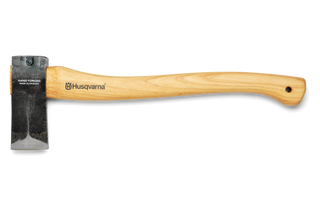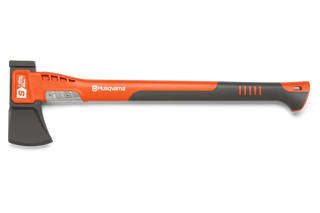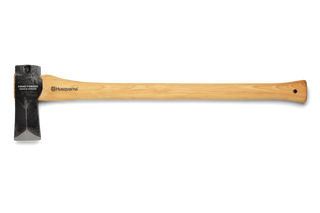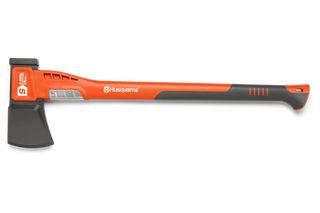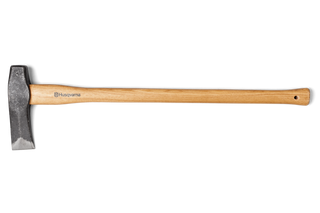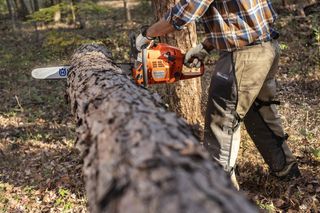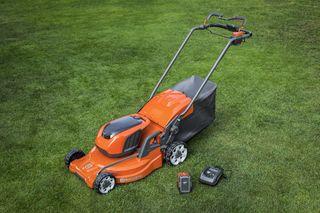Best axe for splitting wood
An axe is a key tool that every homeowner should own. However, not just any axe can be used for splitting wood. Let the experts at Husqvarna help you find the right wood splitting axe or maul for your needs.
Axes are made for cutting, splitting, felling and shaping wood. If you need firewood for staying warm during the winter season ahead, you're going to need a good wood splitting axe. Splitting axes are designed to create smaller chunks by splitting wood fibers apart. This is in contrast to a felling axe, which cuts through those wood fibers. Trust us: you'll feel extremely frustrated if you attempt to use a felling axe for wood splitting purposes. As with any job, having the right tool makes all the difference in the world.
The best axes for splitting wood is a either a splitting axe or splitting maul. What are the differences between these two types of tools?
Splitting Axe
As we said earlier, a splitting axe is designed to split along the grain of wood to break the fibers apart, not cut them. It has a tapered head, generally weighing between 3 and 6 pounds. When you swing the axe down, the force of the wedge causes the wood to split. Typically lighter than a splitting maul, a splitting axe can be used for a longer period of time. You can chose between a wooden handle or composite handle. Composite splitting axes are lighter than wooden ones, as well as more durable; however, both are fine options. Many people still love the feel of an old wooden axe!
Splitting Maul
A splitting maul is essentially a huge sledge hammer with a pointed axe head. The maul head generally weighs between 6 and 8 pounds. Featuring a longer handle and duller blade edge, a maul bluntly splits wood through sheer force. However, the disadvantage of using a splitting maul rather than a splitting axe is the heavier weight. Because it requires more energy to swing a maul, you’ll get tired more quickly.
Which one is right for me?
Ultimately, personal preference, as well as the size and quantity of the wood you plan to split, will determine which axe to use. For very large chunks of wood, the splitting maul is a great choice, as its heavier weight will give you additional power. As a result, you'll spend less time working! However, smaller users may find the heavier weight of the maul difficult to swing.
For smaller pieces of wood, or splitting around the wood’s edges, a splitting axe is the better choice. It's lighter, easier to swing and performs similarly to a splitting maul. The wood-cutting pros at Husqvarna recommend you have both, as together they form an excellent one-two punch for your wood splitting needs.
